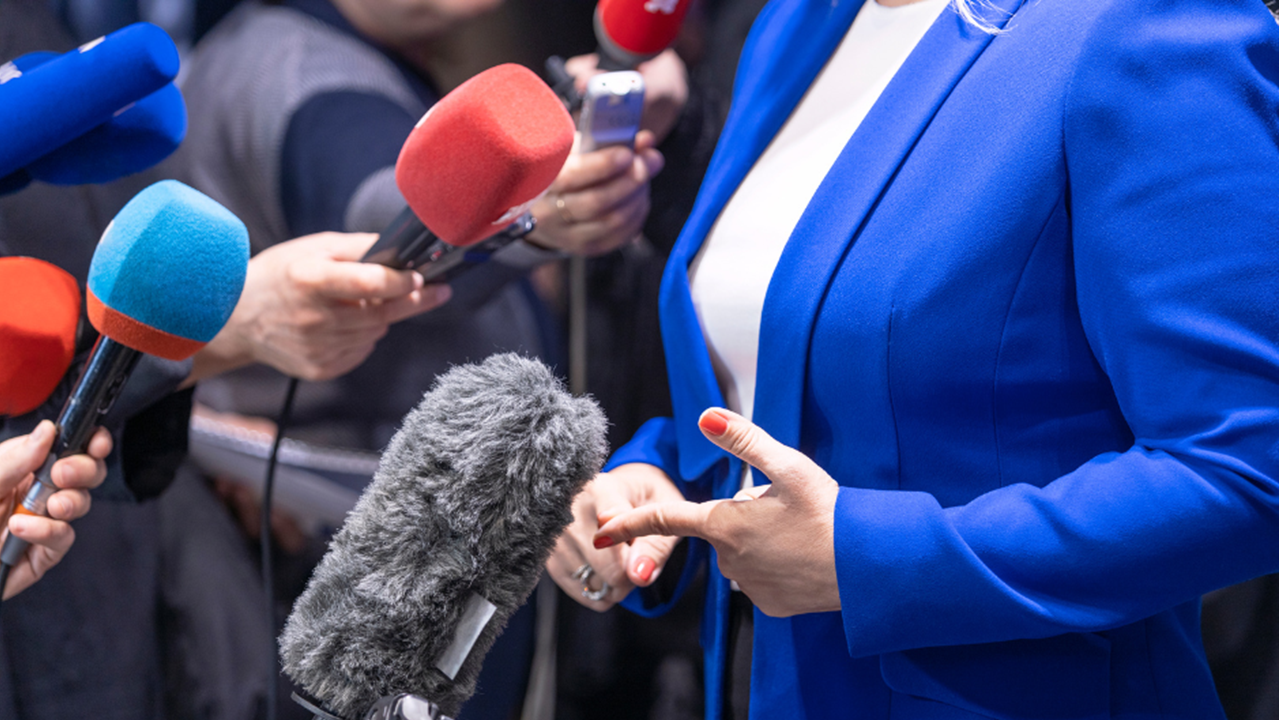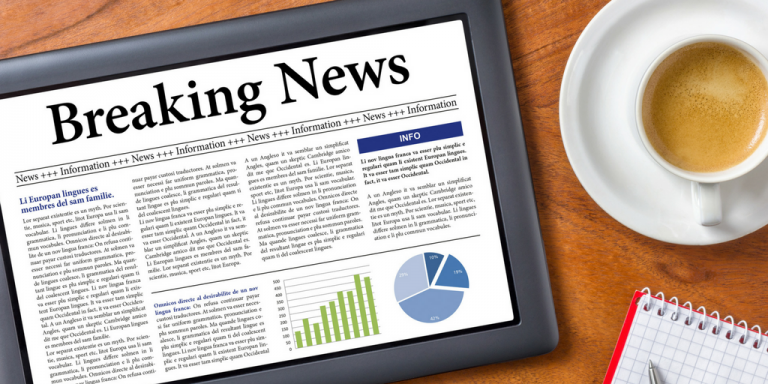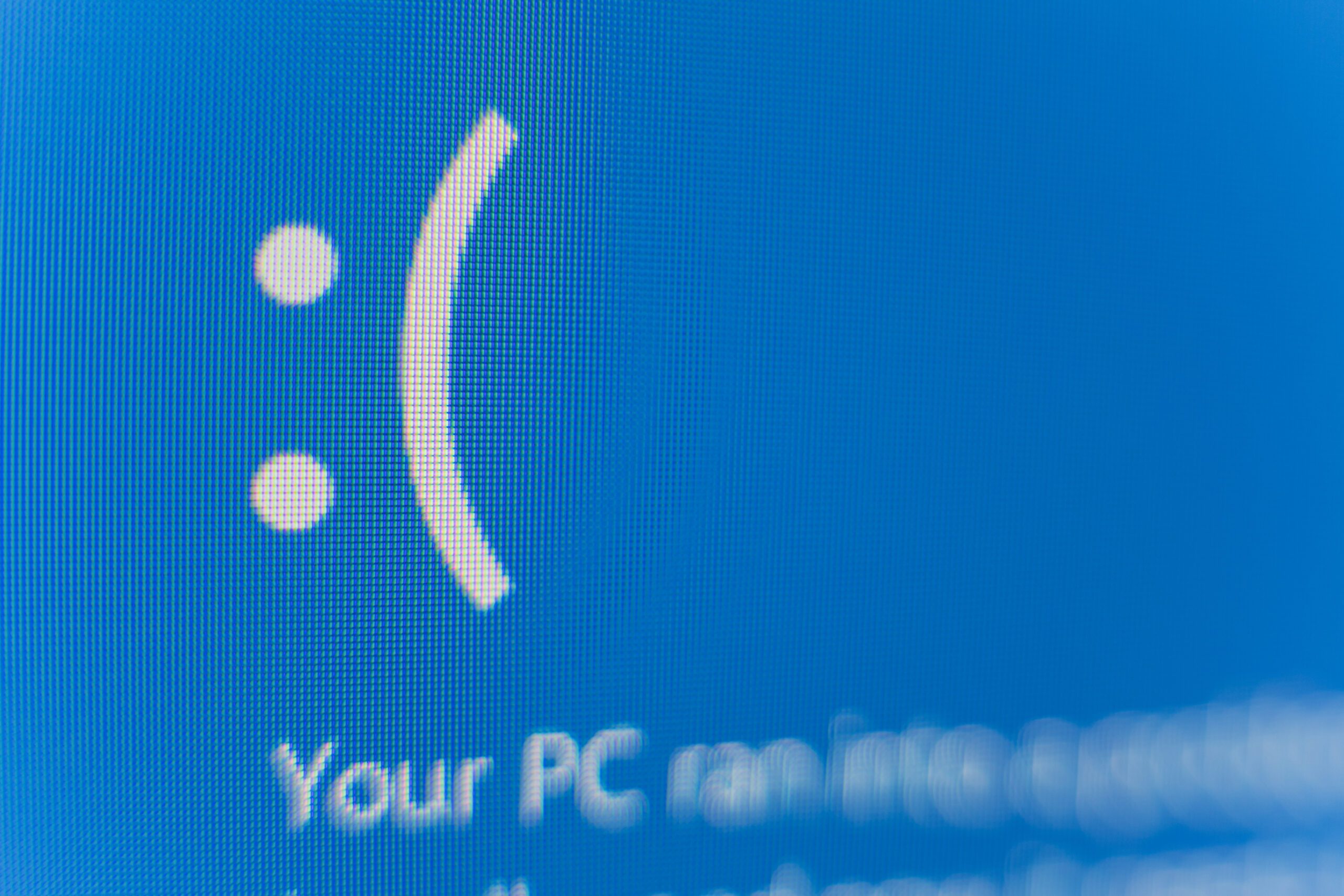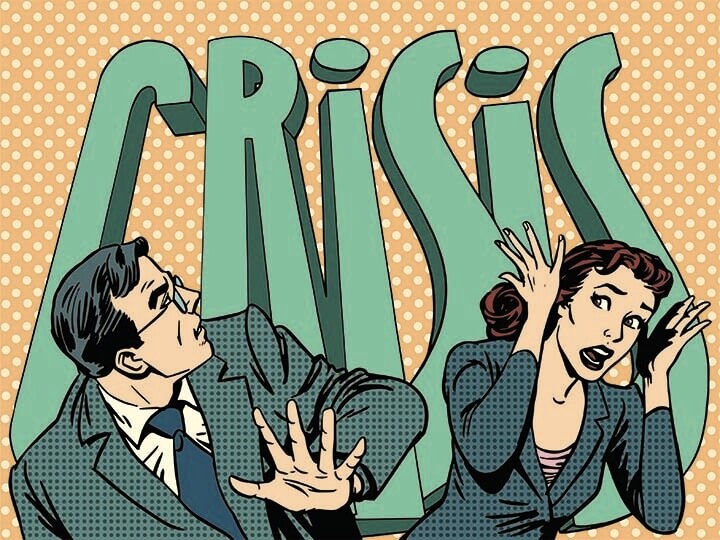
Key Takeaways
- The best PR responses to a crisis occur within 24- to 48-hours after the initial media firestorm.
- Product issues can generate the worst PR crises in the short-term. A failing product can generate 135x more negative coverage for a brand than during an average day.
- Data breaches and governance crises have the biggest long-term impact on reputation. Companies with those crises had the most negative media sentiment six months later.
- Social and political crises have relatively minor long term impacts. Stakeholders may ultimately judge companies on their commitment to core business goals over their social and political values.
PR crises can swiftly impact a company’s reputation and bottom line. Some crises can shed up to half of a company’s stock price for over 2 years.
Yet few companies are adequately equipped to respond to a crisis. It’s vital for PR teams to build concrete plans ahead of time, so what should they consider when building crisis communications plans?
A good crisis response first requires understanding the types of crises and how they unfold. While crises have similarities, they’re not all created equal. The media treats news around a product failure differently than a DE&I controversy, for example. Communicators need to be ready to respond to different crises differently.
What is a PR Crisis?
A PR crisis is an event that harms an organization’s reputation, credibility, or operations. In these moments, negative media coverage reaches new highs. PR teams often drop everything to focus on the problem.
PublicRelay reviewed 100+ crises across nearly 40 companies spanning over 10 industries. Pulling this data together gives insight into how a crisis could play out during the initial shock period of media reporting.
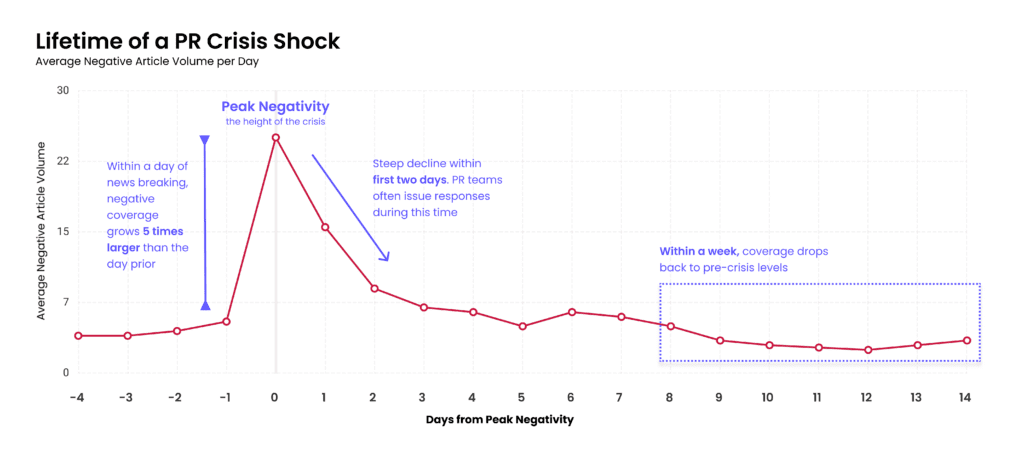
These crisis shocks have little warning. On average, crisis chatter grows rapidly in just a day to reach peak negativity, or when the media firestorm reaches its highest point.
On one hand, crisis shocks are generally short-lived. Negative coverage usually returns to pre-crisis levels in little over a week following a rapid decline within the first two days.
On the other hand, there is very little time to respond. The news cycle may move on after a few days, but public opinion cements quickly and can generate lasting reputational damage.
We found that the best PR responses occur within 24 to 48 hours after peak negativity. This window is when counter-messaging is most effective and communicators can mitigate the long-term reputational damage caused by the crisis.
What are the different types of crises?
Understanding how crises are different can also help predict how bad they will be. We grouped crises into three broad categories:
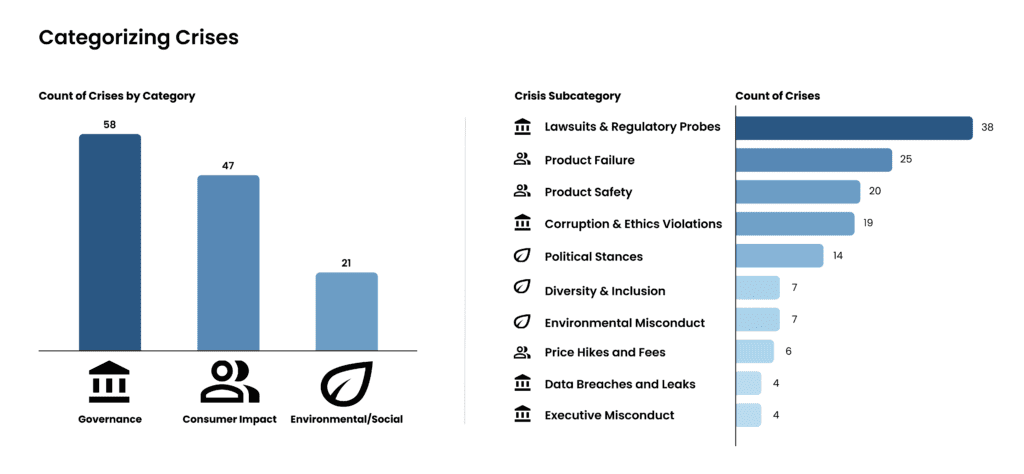
- Governance Crises: Triggered by lawsuits and regulatory investigations, these occur most often in the corporate landscape. Examples include misleading product claims, blocked mergers, and product safety lawsuits. They call into question a brand’s corporate integrity and compliance.
- Consumer Impact Crises: Issues like product failures, safety concerns, and price hikes fuel this type of crisis. They drive a customer’s experience with a brand. As a result, they generate headlines in mainstream media. Common examples include prolonged service outages and product recalls.
- Environmental and Social Crises: These crises are tied to a company’s socio-political standing. Examples include backlash over diversity issues and ecological damage. Crises like these often drive social media buzz and potential boycotts.
In the short-term: How bad is bad?
In the moment, some crises can be worse than others. To compare how bad crises are as they’re happening, we analyzed their peak negativity. We examined how bad the most negative day of a brand crisis was by comparing it to the brand’s negativity during an average day.
Crises like Product Failures and Safety lead to the most negativity. A failing product can generate 135x more negative coverage for a brand than during an average day. Product stories impact everyday news readers, so they quickly catch the attention of mainstream outlets.
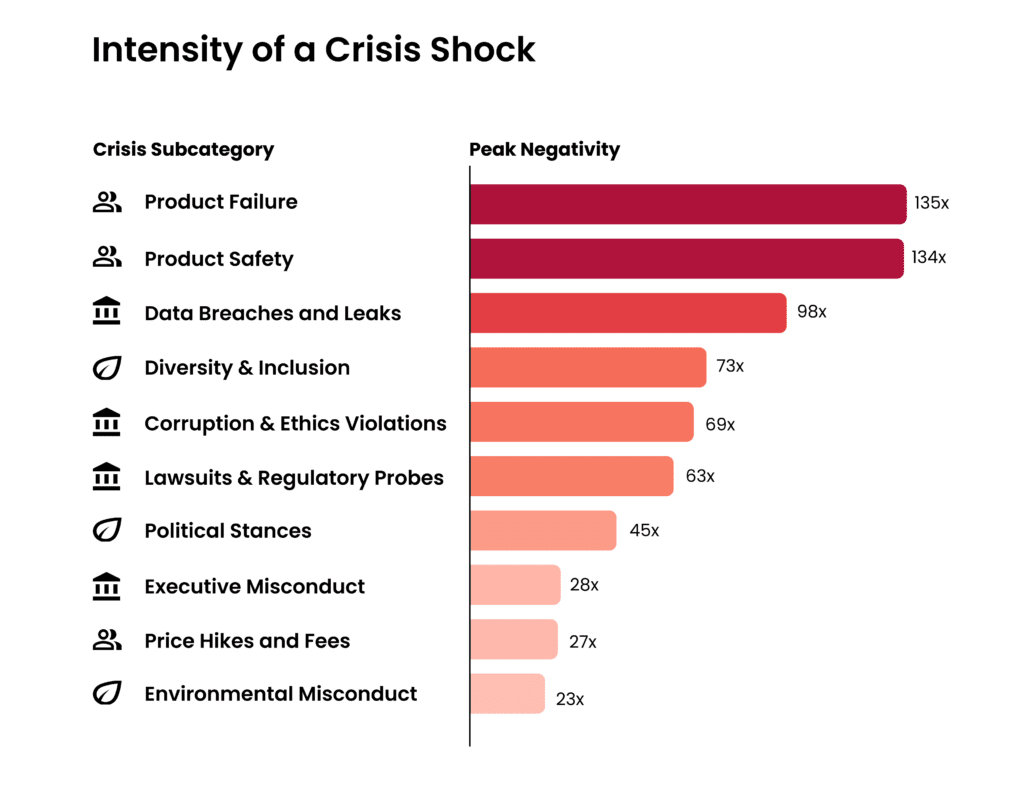
In contrast, issues like Executive Behavior and Environmental Misconduct only receive 20-30x more negative coverage than during a brand’s average day. Those crises are serious, but they may generate less news. Their impact on the public may be hazy and the media pickup can be limited to niche trade publications.
In the long-term: How will it affect my reputation?
Once the initial shock dissipates, the PR work isn’t over. Even when the media cycle moves on, the effects of a crisis can linger for months or years.
To understand the long-term effects of crises on brand reputation, we compared the average media tone of each brand six months before and after a crisis.
The results showed that some crises are easier to recover from others. Data Breaches stand out for their enduring negative impact on reputation. Companies with data breaches had the most negative media sentiment six months later. Leaks from hacks can generate panic and concern among key stakeholders. Data breaches also attract lawsuits and regulatory responses which draw out their lifespan.
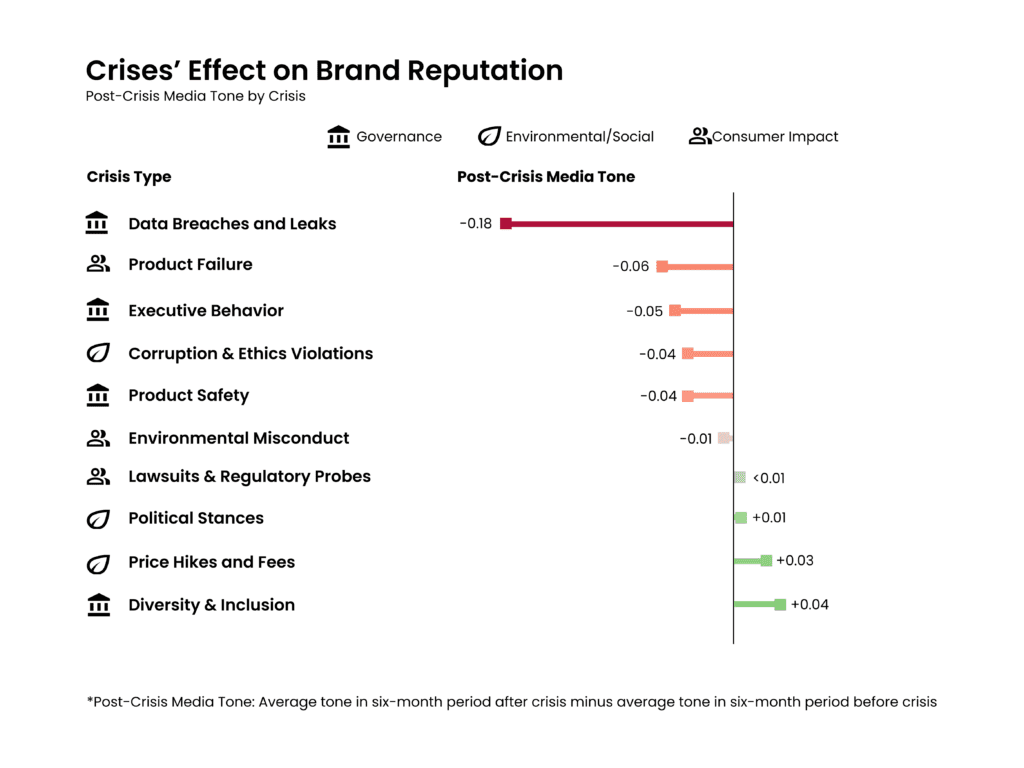
Similarly, governance crises that erode shareholder trust can have lasting repercussions on a company’s reputation. Executive Misconduct, for example, had a persisting negative impact. This was despite those crises seeing less coverage when they first occurred.
Notably, social and political crises are easier to recover from. Backlash to a company’s Political Stances or Diversity & Inclusion initiatives did not often generate long-term negative reputational impacts. Stakeholders may ultimately judge companies on their commitment to core business goals over their social and political values.
Understand the crisis to plan your response
Becoming familiar with the different types of PR crises is critical. Not every crisis is the same, and they each have different short-term or long-term effects.
Consider the types of PR crises that can affect your brand and examine their characteristics. Doing so can help you plan your response strategy and resourcing needs for each different type of PR crisis.
To learn more about our research on PR crises, contact us here.
Related Resources

Today it is harder than ever to protect your brand. Knowing how to shield your company from mis/disinformation can be challenging, especially when research from the CHI 2020 conference highlights the prevalence of people sharing stories on social media, despite not reading past the headline.
With only 26% of Americans feeling confident in their ability to recognize fake news, audiences are more vulnerable to mis/disinformation than ever before. The lack of media literacy – the ability to critically evaluate media content or clearly understand messages – among your target audience may negatively impact your brand if your team doesn’t properly combat it.
If you are not prepared to manage fake news, your audience is more likely to believe stories containing misleading information. But, before charging ahead with a response, PR teams must first understand the distinction between misinformation and disinformation.
What is Misinformation?
Misinformation is inaccurate information shared without the intention of manipulating people. For example, if a news story suggested that a company went under due to the poor financial results they reported in the previous quarter, even if that wasn’t the case, the inaccuracy is most likely unintended. The source of this information may not have been aware it was incorrect and did not necessarily mean to deceive audiences.
What is Disinformation?
Disinformation is false information shared with the intention of misleading people. Falsifying details is problematic and is often used to distort the truth, sometimes for financial or political gain. This is often achieved by concealing the true nature of an article, such as sponsored content disguised as editorial pieces, computer-generated imagery, or misleading headlines.
Managing the Media Narrative
Managing the media narrative is essential to protecting your brand against fabricated news and avoiding long-term consequences. In 2021, a study conducted by NYU indicated that “misinformation on Facebook got six times more clicks than factual news during the 2020 election.” If false information about your company goes viral, it can compromise your credibility and the trust your audience has in your brand.
With the tendency of fake news to spread on social media, it may feel challenging to control the pace of the narrative, but there are methods you can use to manage it.
5 Ways to Protect Your Brand from Misinformation
Even the strongest brands can fall susceptible to rumors. If your PR response is proactive and consistent, you can mitigate the harm caused to your reputation.
Here are some simple yet effective tips for protecting your brand against mis/disinformation:
Build Brand Trust
If you have established brand trust with your audience, they will be more likely to question false narratives about your company. Further, when your team responds with a counter-narrative, your consumers will be more receptive because of the pre-existing trust they have in your brand.
When responding to mis/disinformation, rely on the same components that helped you to build brand trust with your audience in the first place. Authenticity, transparency, and consistent messaging can help you to maintain your consumers’ faith in your company in the wake of false narratives.
Look for Signs of Misinformation and Disinformation
Tracking your media coverage can allow you to detect untrue narratives about your brand. Media measurement is an essential tool for observing stories about your brand and its traction on social media. Sentiment analysis is equally as important. It enables you to evaluate content for context, sarcasm, and irony, and with greater accuracy when using human-augmented technology. By utilizing effective media measurement and sentiment analysis, you can detect the early signs of mis/disinformation in coverage of your brand and address the narrative before it spins out of control.
Include Plans for Misinformation/Disinformation in Your Crisis Communications Strategy
An effective communications strategy includes preparation for PR crises, including the spread of inaccurate information. With a detailed crisis plan that provides for various scenarios with appropriate counter-narratives, external and internal points of contact, and trusted media lists, you can respond quickly and effectively. How you act in the first few hours of a crisis can determine the narrative’s impact.
Use Social Media to Evaluate False Narratives
Today, stories that misrepresent brands are most likely to start online. With the help of social media tools, your team can follow false narratives from traditional to social media and monitor how much traction they generate. Predictive solutions, for example, can evaluate the impact of false narratives and help you to identify the stories that warrant a response by determining their probability of going viral. This data enables your team to work proactively and with time advantage.
Own Up to Your Mistakes
If mis/disinformation about your brand is the result of your team’s mistake or a false statement you’ve inadvertently spread, hold yourself accountable and inform your audience. This helps to build brand trust and credibility by demonstrating accountability. Being forthright and transparent when you’ve made a mistake will make your audience more receptive to your response when future incidences of mis/disinformation occur.
A Long-Term Solution to False Narratives
Take a moment to critique your current communications strategy. Is your team prepared to tackle a false narrative targeting your brand today? If not, what solutions or plans do you need in place to make sure people are receiving correct information about your brand?
With a strategy in place, you can protect your brand from mis/disinformation and maintain the trust of your audience. At PublicRelay, our human-augmented technology approach to media analytics makes it easier to track media coverage of your brand and detect misinformation and disinformation in its formative stages. With highly accurate sentiment analysis and advanced technology enabling predictive solutions, you can take a proactive approach to manage your brand.
Click here to learn more!
Related Resources


In the age of social media, PR crises have become increasingly common. While your team may have a rough idea of how to respond to a negative situation that threatens the reputation of your company, it requires precise and swift action to minimize fallout.
Being prepared with a data-driven plan can help you save your company’s reputation, extensive amounts of money, and the resources of your communications team.
What is Public Relations Crisis?
A public relations crisis is a situation in which a company’s reputation is threatened by a negative event covered in the press. Topics that often require PR management can range from workplace scandals and product issues to executive malfeasance, and a litany of other possibilities.
Modern-day PR crises, however, can reach far beyond a single negative article in a high-power outlet: they can go viral on social media and stain corporate reputations for months or even years. An executive scandal can quickly result in a brand boycott, turning one person’s actions into an immediate financial loss for a corporation. These issues can also cause long-term harm to a company’s brand and reputation, pressing PR teams to rethink their crisis strategies and ask themselves critical questions about various scenarios. For instance, how does a nonprofit regain trust after an employee accidentally tweets an inappropriate comment on the company’s Twitter handle?
Why Do You Need a Crisis Communication Plan?
Your team needs a crisis communication plan because having an actionable and informed strategy prepared can help protect your company’s reputation from media scandals. Though such crises may seem exclusive to Fortune 500 companies – infamous situations like Johnson & Johnson’s Tylenol recall or Chipotle’s year-long battle with E. coli are the PR bogeymen – with social media, a viral tweet or a trending hashtag about your company can draw significant traditional media coverage.
However, having a plan for a theoretical crisis is not enough on its own. Your plan must be airtight and quick to execute, as even a misspelled apology tweet can balloon the size of a PR problem. Yet, with the endless variety of potential PR crises, where do you start planning?
Examples of Crisis Communication
Planning your team’s crisis response by rooting it in peer examples is the strongest way to ensure your path to resolution is efficient and effective. By looking at multiple scenarios and case studies of other companies’ action plans, your team can identify the best strategies for resolving a crisis and maintaining the strength of your brand.
Addressing Product Issues
Product issues and recalls are the most common forms of PR crises and, if mishandled, they can cost companies millions. In 2016, Samsung’s flagship phone, the Note 7, began catching on fire and exploding. The company quickly voluntarily recalled 2.5 million units of the phone, but it was not until airlines banned the phone that Samsung pulled it completely from the market. At this point, Samsung went a step further – it sent automatic messages to Note 7 owners to return their phones, it remotely locked phones to make them unusable, and it ultimately reclaimed 99% of the phones sold. The concern Samsung displayed for removing a dangerous product from the market, and its subsequent battery safety initiatives, allowed the company to financially recover and continue the Note phone line.
Leadership Crises
In some situations, the words or actions of leadership can compromise a company’s reputation. Communications departments must be involved in crafting executive statements and taking measures to prevent potential repercussions. The following examples outline how the words and actions of leadership can make or break a company brand.
CEO Behavior
In 2020, CrossFit CEO Greg Glassman said that neither he nor any CrossFit gym owners were mourning the death of George Floyd. His comments, recorded on a Zoom call, were publicly released. Almost immediately, Glassman stepped down and offered a strongly worded apology that revoked his comments and emphasized his dedication to the company and desire to free CrossFit of his controversy. By stepping down immediately and taking ownership of his actions, Glassman turned the press attention on himself and spared the CrossFit brand of intense scrutiny or criticism.
Spokesperson Scandals
PR crises can also arise from notable company spokespeople, especially if they appear in advertisements and represent the brand. In 2018, “Papa John” Schnatter, the spokesman and CEO of Papa John’s, admitted to using a racial slur during a company conference call. Shortly thereafter, Schnatter resigned as the chairman of Papa John’s. But stepping down was not enough – Schnatter’s image and Papa John’s had become synonymous, and the fast-food chain needed to find meaningful ways to communicate its distance from the former spokesperson and CEO. In response, Papa John’s implemented an anti-bias training, acknowledged the issue on Twitter, and apologized for Schnatter’s actions, yet the brand still struggled to bounce back.
Executive Communication
The actions of your C-Suite can also exacerbate problems. When two Boeing 737 Max aircraft tragically crashed in 2019, CEO Dennis Muilenburg allegedly stressed to President Trump that pilots could easily be trained to counteract any technical problems, absolving Boeing of the need to fix the technical issues. Muilenburg’s choice of language, which implied the technical issues would persist in 737 Max airplanes, stoked further fear and compelled countries to ground the aircraft. Though 737 Max planes have recently been allowed to fly again, traveler anxiety persists over the safety of the planes due to Muilenburg’s choice of language and response to the crisis.
Employees’ Social Media Activity
PR crises can also come from within: current and former employees can make problematic comments about their employers on social media. In one example, Chipotle fired an employee who voiced criticism on Twitter about the company’s low wages. The mismanagement of the employee’s complaint not only spurred increased media attention but also a lawsuit against Chipotle that it eventually lost. Employing real-time monitoring of social media sites like Twitter can help your team catch and respond to damaging comments from employees before they gain traction online, allowing internal resolution that avoids controversy.
Franchisee Controversy
In 2021, a UPS store in small-town Newport, Vermont refused to follow the Governor’s mask mandate intended to curb the spread of COVID-19. Social media outcry was swift: in a town of roughly 4,500 people, news of the UPS store garnered more than 390 social shares and almost 2,500 reactions and comments on Facebook. Nearly half the town was talking about the news. Just one day later, UPS announced it was ending its relationship with the store owner, with coverage jumping to national outlets, including the Associated Press. UPS’s quick response curtailed social media outcry, publicly cemented the company’s concern about the COVID-19 pandemic, and distanced its corporate reputation from further coverage focused solely on the former franchise owner.
Ground Crisis Communications in Data
PR crises are complex, variable situations that threaten to stain company brands if not handled properly. From executive malfeasance to employee social media activity, the spectrum of potential crises is broad. While the best response to such situations is to act immediately with a data-driven plan rooted in industry analysis, it is also possible to nip crises in the bud before they bloom.
PublicRelay recently launched a product designed to help jumpstart crisis management: Predictive Alerts. Using AI, the PublicRelay system can predict, with up to 80% accuracy, how likely an article is to go viral on Twitter. If a given tweet seems likely to go viral, PublicRelay can automatically alert your communications team to the tweet within several hours of its initial posting. This gives PR teams the unique opportunity to implement their communications response to a crisis before it has even happened. Getting ahead of a viral tweet can forestall virality, and potentially eliminate the crisis, saving your team – and company – valuable time and money.
PublicRelay also offers comprehensive competitor media tracking, which can provide your communications team with vital information about how competitors respond to critical events. Following the press of your industry peers can help your team create data-based strategies to quickly resolve crises. The PublicRelay system can even help monitor your response in real-time, giving your team the flexibility to pivot your messaging, if necessary.
At PublicRelay, our human and AI hybrid approach to analyzing traditional and social media can help your team build a plan for managing and identifying a crisis the moment (or even before), it breaks and monitor the impacts of your strategy in real-time. To learn more about using PublicRelay to monitor your brand online, click here.
Related Resources


A crisis communication plan has three phases that consist of planning for, responding to, and assessing methods. It is a strategy for companies’ communications teams to respond to events that attract negative media attention. Media crises that may impact a company’s reputation and require an immediate response from communications teams can range from criticisms of a company’s products or services to executive scandals.
Why is a Crisis Communication Plan Important?
A crisis communication plan is important because it can enable the effective flow of information between a company and its stakeholders. It can also provide direction for the communications team in responding to negative media coverage. The communications department plays an integral role in managing a company’s image when a crisis has occurred and operating from a predetermined plan can improve your team’s response time.
Elements of a Crisis Communication Plan
Each phase has important steps when developing a plan that can promote trust between you and your stakeholders and reduce reputational damage to your company. It also makes it easier for the communications team to remedy any situation that may have a negative impact on the organization’s reputation or brand.
- Build your crisis communications team
- Develop scenario-specific strategies
- Develop and deliver your message
- Monitor the impact of your message
- Evaluate your methods
- Continue to monitor the industry
Pre-Crisis: Planning Phase
The planning phase is an in-depth preparation to consider all the logistics involved in a communications crisis. If the foundation of your plan is not established, the repercussions could be significant. For example, without a plan in place, your communications team’s response could be delayed, thus there may be more negative press accumulating while the team formulates a plan of action. During this phase, building a crisis communications team and developing scenario-specific strategies are important parts to ensure your team is sufficiently prepared.
Build Your Crisis Communications Team
The team should have representatives from various departments across the company. By building a team with representatives from multiple departments – such as finance, sales, legal, and customer service – you can ensure that your plan will address every aspect of company operation that could be impacted. Though some departments may not be affected, their representatives can offer insight to help mitigate damage and develop a response that addresses the full spectrum of stakeholder needs.
When a team is built, a single member acts as the designated spokesperson responsible for disseminating the company’s key messages. The most effective spokesperson is often a high-ranking member of the department who demonstrates likeability and professionalism and is skilled at building trust. The spokesperson should be provided with relevant training during the planning phase to ensure they are prepared to act once a crisis occurs.
Develop Scenario-Specific Strategies
Having multiple responses ready that are specific to a variety of scenarios is crucial during preparation. For instance, an executive scandal would likely require a different communications response from a product recall.
In 2019, McDonald’s responded to the scandal implicating their former CEO, Steve Easterbrook, by severing ties with the executive and issuing public statements that condoned his behavior. However, this response does not apply to all communications crises as some will implicate the company rather than a single individual. For this reason, you will benefit from having alternative, scenario-specific strategies prepared.
One of the most effective methods for developing situation-appropriate responses is to look to the experiences of your competitors. By actively researching and analyzing your competitors’ media coverage and response impact, companies can create data-driven response plans.
During the Crisis: Response Phase
It is not always possible to predict when a communications crisis will occur, but with proper planning your team is always ready to respond. Your team knows their roles and you have strategies for the most likely scenarios; Implementation is the most appropriate plan of action and designing a message to address the issue at hand.
Develop and Deliver Your Message
Developing and disseminating an appropriate message helps responding in a timely manner. Your response should be one of the earliest messages out there, or else you risk losing control of the narrative. Get your team together, evaluate the facts that are available to you at the time, and decide how your company will respond. Deliver a single, unified message, as conflicting messages can lead to doubts about the credibility of your message and spokespeople.
Once you have decided on your message, nominated a spokesperson, and issued a press release, begin reaching out to the authors and media outlets that have positively covered your company in the past. By utilizing media influencers, you can amplify your company’s message and reach a larger audience.
Monitor the Impact of Your Message
Monitoring the performance and impact on the crisis narrative of your message is key. Some metrics to consider measuring are:
- Key message penetration: track the volume of your company’s media coverage related to the situation to evaluate the impact of your messaging.
- Outlets: track to see if your message is being picked up by media outlets or journalists that are important to your brand
- Social media sharing: monitor how far both the initial crisis is being shared and how much your response is being seen.
- Sentiment: assess whether a spike in coverage is positive or negative to determine whether your message is changing minds.
Tracking all these together will give you a holistic view of how your message is performing, allowing you to assess and adjust accordingly.
After the Crisis: Assessment Phase
By evaluating and continuously monitoring your industry, you can better prepare for the future and improve your company response.
Evaluate Your Methods
Review your response and its impact. Identifying what worked as well as areas for improvement will pay dividends for the future. For example, Chipotle was the center of a major E. coli outbreak in 2015. They responded defensively, by outlining the company’s improvements to food safety protocol and explaining that the real number of E. coli cases was marginally lower than the number reported. However, this did not stop their reputation and stock price from falling significantly.
Since their response was poorly received, they examined their internal process and adjusted their approach to a later crisis. In 2018, one Chipotle location was reported for selling contaminated food. This time, however, the company closed the offending location, extended a promotion to all other locations world-wide, and announced a number of new menu items. As a result, Chipotle’s stock prices rose, and the E. coli incident flew under the radar for many consumers.
Continue to Monitor the Industry
Continuing to track your industry and cultural changes over time can impact the effectiveness of your response. Crisis communication planning is a cycle, and should be routinely reassessed, evaluated, and modified according to the industry and social climate.
Develop a Data-Driven Strategy
A crisis communication plan should be part of your wider communications strategy to safeguard your company’s reputation in the face of public relations crises. By monitoring industry trends, measuring your campaigns, and tracking competitors, you can develop a data-driven strategy that will prepare you for any communications crisis.
At PublicRelay, we use a combination of artificial intelligence and human analysis to draw actionable insights from your media coverage. Click here to elevate your media monitoring into media intelligence today!
The editorial team at PublicRelay contributed to writing this blog.
Related Resources


A company can build up a great brand reputation one day, only to have an unforeseen PR crisis tarnish its brand the next day. Effective crisis management can not only mitigate the negative impact that such an event causes, but also has the potential to build up a company’s brand reputation in the long run. Organizations will inevitably face crises, so they must prepare for the unexpected and know when and how to respond under pressure.
We recently spoke with Choice Hotels VP of External Communications and Public Relations, Lorri Christou and Prudential Financial VP of Global Communications, Allyson Hugley about the essentials of top-notch crisis and risk management. Our guests shared valuable insights on how to plan proactively, how to determine the impact of a crisis, and how to respond appropriately.
Make an Actionable Game Plan
No matter the industry, company size, or business model, every organization must have protocol set in stone in case of a crisis. Christou found herself amidst a crisis soon after she had started working at Choice, and on a Saturday no less. Upon realizing that the company’s crisis plan was outdated, unactionable, and impractical, Christou set out to better prepare the organization moving forward.
Starting from scratch to develop an actionable crisis plan, Christou created an enterprise-wide crisis management response team (CMRT), which ensures that the right people are in the right places to provide fast and seamless responses. Furthermore, she recommends training the CMRT appropriately and implementing a call platform, so that when the time comes, there are people throughout the organization that know what to do and how to contact one another. Annual tabletop drills, which test and improve defined processes, are also conducted to ensure that the crisis plan works and does so efficiently.
Leverage Internal and External Expertise
While it is essential for all businesses to have an actionable crisis plan, reputation management doesn’t mean an organization should act on every disgruntled customer’s complaint. How do you figure out when to respond, or equally importantly, when not to respond?
Hugley recommends leveraging partners both inside and outside your organization for a comprehensive understanding of a potential crisis and its impact. In order to develop a response strategy, it is necessary to have designated risk management personnel who are asking the right questions and are thinking through suitable frameworks to assess reputation impact.
Coupling internal assessments with external resources, from entities responsible for understanding the potential for risk and reputation events, will properly inform your company’s response strategies. By seeking out and working with different types of partners, your organization can make the most effective decisions around when and how to react.
Use Data Analytics for Message Optimization
Understanding the scope of a crisis event goes hand in hand with crafting an appropriate and effective message. In addition to knowing when to respond, it is just as important to know how to respond and who to prioritize in that response.
Data analytics plays a significant role throughout this process by measuring the reputation damage and guiding the messaging strategy. For example, Christou suggests that sometimes there is more emotion in a crisis issue than there really is reputation damage. In other words, people may be interacting with the brand in a very emotional manner, but it doesn’t translate to altered buying patterns. By utilizing data analytics to detect this, a proper response can be formulated to manage the situation.
In any case, internal teams must be very mindful of what their statements say or don’t say. A nuance in wording, Christou emphasizes, can really change the meaning of a message and potentially inflict further damage. Thus, a well-executed message must be crafted using a data-driven response strategy.
Related Resources


Crisis strikes in the blink of an eye and can erupt into a full media catastrophe overnight. Even when a crisis is done, if it is not dealt with successfully, the aftermath can translate into long term financial loss, not to mention a destruction of public trust.
To top it off, brand turmoil can be a make or break moment for your career. Because every shred of time is important during a crisis, you need to use data to make agile, strategic decisions.
The following questions will help you get off on the right foot:
How Bad is the Situation?
How do you even know when you’re in a crisis? This is when you refer to your historical data. Not every negative article is a death sentence for your brand, although your executives might not agree. First off, determine if this is a real coverage spike. Comparing coverage trends overtime can help you measure the magnitude of the story pickup. If there is a legitimate uptick in coverage, it is time to hyper-dissect the issue.
An effective reputation management strategy starts with identifying your key brand drivers. Analyzing these drivers over time allows your company to develop a baseline which will make obvious any deviations from that baseline. These deviations are indications that the issue is starting to hurt your brand.
You cannot put together a response strategy without fully evaluating the scope of the situation. Your team needs to answer things like who is talking about the issue? Are these my key publics? What influencers are picking up the story? Is it getting heavily shared on social? What audiences are sharing the article and across what channels? Without this information, it will be impossible to quickly target the right people with your key messages in your response strategy.
Are You Connected with the Right Audiences to Fix It?
Once you’ve assessed the damage and determined the messages you need to push, you need to find the right influencers to engage. If you don’t spend time building relationships when things are going well, you’re left out to dry when things go bad. Use data to first prioritize your outreach to the authors and outlets who have demonstrated interest in the topic you want to push, have a wide audience reach, and are most likely to receive high social sharing.
How Effective Are Your Spokespeople?
Not only are spokespersons needed for media communications, but in a crisis, they are essential. You need to know which of them will most effectively resonate with your target audiences and which work best when “under fire.” Data from past crises or from previous campaigns must be harnessed to select and coach your top spokespeople.
Are Your Messages Pulling Through?
Communicators should determine what outcomes they are trying to accomplish with their messaging and measure campaigns accordingly. For instance, are you trying to improve customer perceptions against a faulty product, strengthen investor relations in light of a crisis, or demonstrate a united company front? Collecting accurate data from both traditional and social media is an important first step in determining if coverage is improving in your favor and if it contains the key messages you are pushing in your crisis plan. To understand your effectiveness, ask questions like, are influencers or our spokespeople conveying the right message? Is it resonating? Or, do we need to adjust our strategy and reallocate resources if it is not working? Even with limited resources and time during a crisis, using data to adjust allocation helps your communications team stay agile and effective.
Can I Prove that My Strategy is Working?
Once your strategy starts to take hold and the conflict is dying down, it is time to loop in your C-suite. Company crises can be deal-makers (or breakers) in the career of a PR or Communications professional. C-suite execs want proof that a crisis strategy is working, both during and after the event.
Help the C-suite truly understand that negative coverage around the event has stopped by comparing coverage to the past. Your data should show that the positive coverage has increased dramatically or that it is back to neutral levels.
The cornerstone of every crisis response strategy is accurate data. Good media intelligence not only brings potential PR crises to your attention early but provides a road map on how to assess, manage and defuse the situation. It is important to always track your customers, brand drivers, your industry, and your competitors – you need to make sure that nothing is spreading once it is contained.
Related Resources


Early in 2011, the “Arab Spring” uprisings made headlines around the world, using social media to share information without government interference. Twitter was a key platform through which this was accomplished and the spike in the use of hashtags such as #Cairo and #ArabSpring showed its impact. Using these hashtags allowed sympathisers around the world to demonstrate their support for the uprising and provided real-time encouragement to the revolutionaries.
Importantly though, while social media platforms like Twitter can play a vital role in the propagation of real-time unfiltered information during time likes this, it is also a popular communication channel via which businesses attempt to promote products and engage customers. On February 3, these two different uses converged with unfortunate results. Early that day, fashion designer Kenneth Cole decided to hitch his wagon to a heavily-trending topic to promote his new clothing collection. He did this by tweeting “Millions are in uproar in #Cairo. Rumor is they heard our new spring collection is now available online at http://bit.ly/KCairo -KC”.
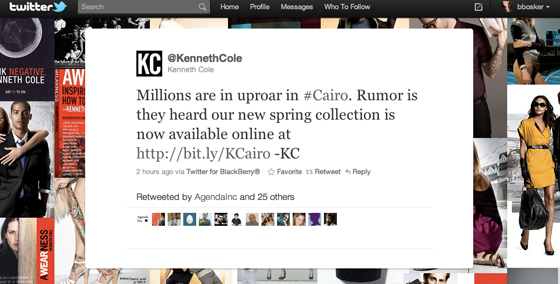

What Happened Next…
Within minutes, the tweet went viral and a wave of negative coverage followed close behind. The comment was condemned for being – at best – in poor taste and – at worst – totally offensive. The condemnation took many forms; for example, a spoof ‘KennethColePR’ twitter account was created, with posters competing to outdo each with parodies of the tweet. A crisis management PR strategy was rapidly enacted with Cole apologizing 2 hours later via Facebook, but the reputational damage was already done.
So, What Should Have Happened?
For any company where social media is an important element of their communications strategy, the temptation to jump on a trending topic to generate coverage will always be great. When handled sensitively, this approach could deliver positive benefits, but before embarking upon this course it is important to understand the tone and context around the topic that you plan to hijack and to incorporate your tactic into a broader media monitoring and communications strategy, to ensure that you maintain control of the conversation.
In this case, it certainly appears that this wasn’t done, although an oddly similar episode in September 2013 suggests that this was not an isolated mishap, but rather a conscious action seemingly based on the old saw that “any news is good news”. If this is true, it highlights even more strongly the need for full understanding of what you are jumping into via accurate monitoring of media coverage in near-real time, otherwise any short-term upswing in attention could be more than wiped out by the subsequent negative coverage.

